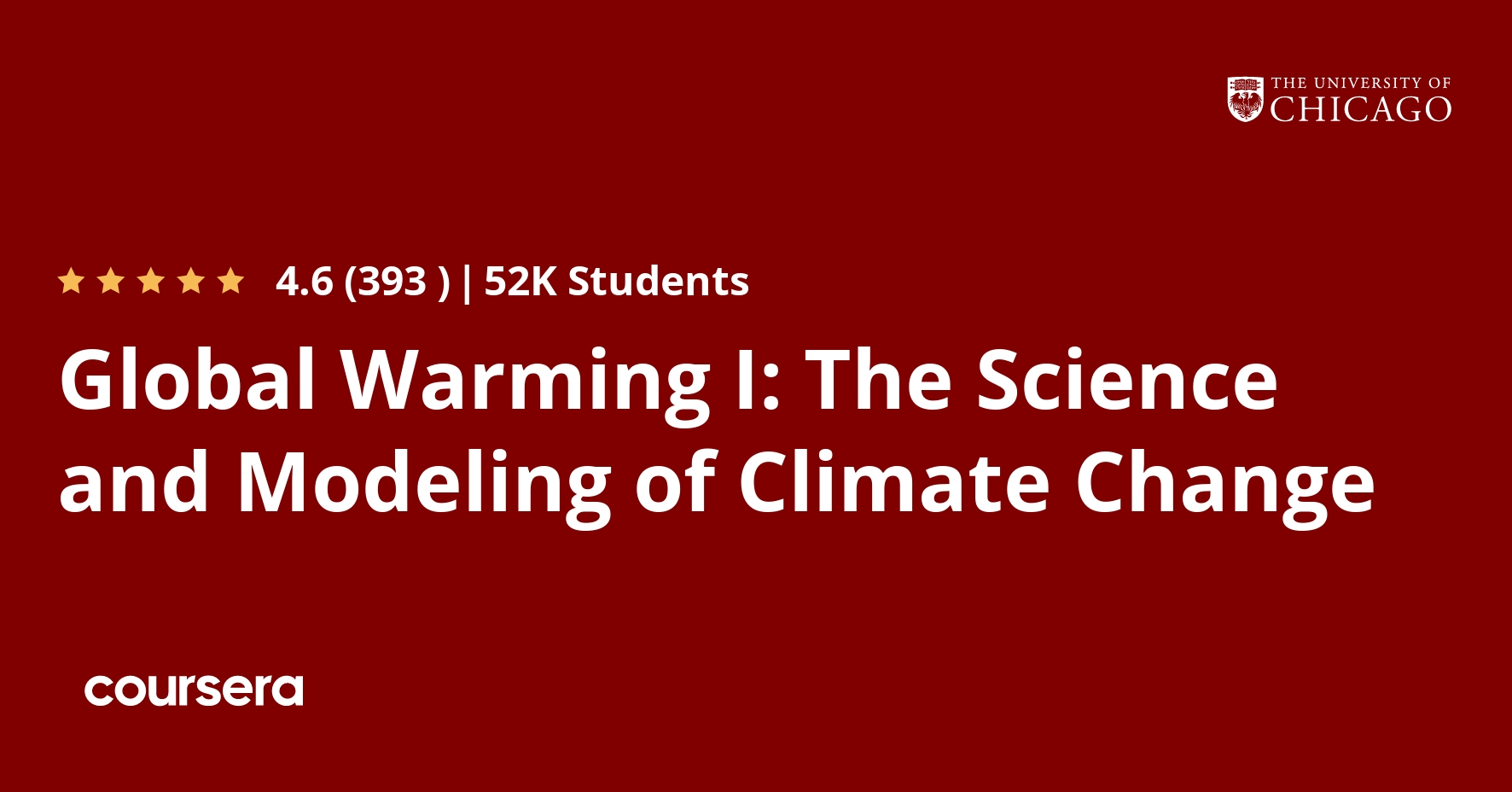Description
This class describes the science of global warming and the forecast for humans’ impact on Earth’s climate. Intended for an audience without much scientific background but a healthy sense of curiosity, the class brings together insights and perspectives from physics, chemistry, biology, earth and atmospheric sciences, and even some economics—all based on a foundation of simple mathematics (algebra).
What you will learn
Overview
What you will find in this class.
Heat, Light, and Energy
A primer on how to use units to describe numbers when describing temperature, energy, and light. Even if you don’t plan on doing calculations yourself, understanding how units work will help to follow the rest of the lectures in the class. If you are interested in practicing your analysis skills, using units to guide calculations, there are some exercises in the Part II of this class.
First Climate Model
The balance of energy flow, as incoming sunlight and outgoing infrared, allow us to create our first simple climate model, including a simple greenhouse effect. There are two extended exercises in Part II of this class, one an analytical (algebraic) model of the equilibrium temperature of a planet, the other a numerical model of how that temperature might evolve through time.
Greenhouse Gases and the Atmosphere
The Layer Model above assumes that the pane of glass representing the atmosphere absorbs all of the infrared radiation that hits it and that it radiates at all infrared wavelengths. In other words, the layer model atmosphere is an infrared blackbody, but transparent in the visible. In reality, greenhouse gases are not “black” at all; they are very choosy about which frequencies of light they absorb and emit. This selective absorption of infrared light by greenhouse gases leads to the band saturation effect, which makes rare, trace gases like methane disproportionally powerful relative to higher-concentration gases like CO₂.






